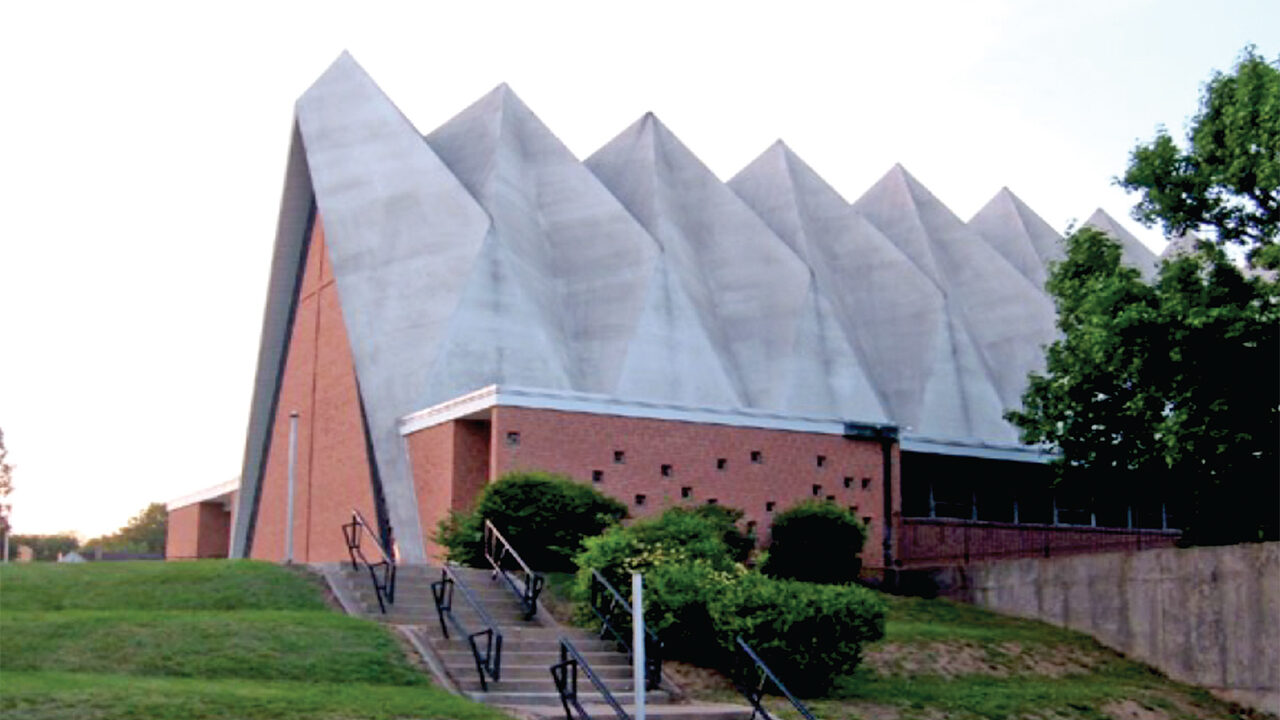
Christ the King United Church of Christ (CTK) is a small congregation of approximately one hundred active members in an unincorporated part of St. Louis County, poised between Black Jack to the east and Florissant to the west. Its mailing address is designated as Florissant, but the lack of incorporation makes sense for a church that defies many of the typical categorizations that might otherwise be ascribed to it. It is an African-American religious body affiliated with a majority White Protestant denomination, and a Black congregation housed in a remarkable building that reflects its post-World War II, midcentury modernist construction. On Sunday mornings, CTK reflects the truism that “eleven o’clock on Sunday is the most segregated hour of the week,” but within its walls, alongside the recognitions of prominent civil rights leaders, hang pictures of German ethnic forebears.

Figure 1 Photo by Toby Weiss | beltstl.com
What is this church, then, and what can its transformations over time and its occupation of multiple frames of reference tell us about segregation and this site? One could tell its story as a relatively straightforward religious correlate of the migration of Blacks to the Black Jack/Florissant area followed by White flight westward, a story in which churches followed the prevailing segregation patterns of education and housing. Alternatively, one might conclude that the transformation of CTK fits into a liberal integrationist model, a success story of a predominantly Black church that has productively assimilated into an overwhelmingly White denominational niche, while still serving the needs of its congregants. But because of its religious traditions, and its ties to both local and national religious networks, the legacies of race and religion at CTK here are far more vibrant and variegated than that narrative arc might suggest; a close examination reveals a complex tangle of affiliations that are held together, if not always in harmonious balance, in this space. CTK is, in fact, a rich site for assessing the shifting nodes of community engagement and the relationship of religious affiliation to other social forces within a contemporary urban setting.
If one were not paying close attention, it would be easy to stumble when approaching the building. The cement steps leading up to CTK crumble around the edges and tilt awkwardly at several points, making the descent, in particular, a potentially treacherous one. The rectangular metal handrails, original to the 1959 campus, defy right angles, in keeping with the transformative social vision of that era; seemingly better prepared to launch one into space than to break a fall, they make it so that grabbing hold of one might not provide the stability needed (Fig. 1). Aging midcentury elements aside, the walkway leads to a stunning view of a serrated exterior roofline. Originally bright white, the roof itself gradually dimmed to a dull gray over the years. Residents from the 1970s and 80s recall the “modern mountain peaks” with fondness, especially during holiday periods, when they were lit up with colored floodlights: red and green during the Christmas season, and red, white, and blue for the fourth of July.¹
Nicknamed the “Valley of Flowers,” Florissant teemed with young families looking for more space and better employment at local up-and-coming firms such as Emerson Electric and McDonnell Douglas. The artifacts of this era are readily apparent in the neighborhoods surrounding CTK, where local architects like Harris Armstrong and Walter Manske erected a generation of modernist structures.
But the history of this religious community spans a century before this foundation was laid. This is the fourth site occupied by the congregation. Established in 1856 as the German-based Independent Evangelical Protestant Church at 8th and Mound streets in downtown St. Louis (an intersection that was demolished and streets redirected to make way for the entrance to the Stan Musial Bridge), it moved nearby to 13th and Tyler in 1869, then to Fair and Margaretta in the Fairgrounds neighbor-hood (1917-1959). Finally, in 1960, the church settled into its current location on Old Halls Ferry Road.² Like most of north county, Florissant in 1950 was still a rural outpost, far from the urban center of economic and cultural life in St. Louis. The construction of highways and industries to keep up with postwar demands soon brought housing, shopping malls, schools, and churches to areas like Ferguson, Black Jack, and Florissant, and the newly developed and federally-funded interstate highway system provided a means to commute longer distances. Nicknamed the “Valley of Flowers,” Florissant teemed with young families looking for more space and better employment at local up-and-coming firms such as Emerson Electric and McDonnell Douglas. The artifacts of this era are readily apparent in the neighborhoods surrounding CTK, where local architects like Harris Armstrong and Walter Manske erected a generation of modernist structures.³ From a population of 3,800 in 1950, Florissant grew to over 38,000 within the decade, and by 1980 the population had peaked at 76,000. The town prospered: the average family income in 1960 was $8,626, substantially more than the national average of $6,661. Surrounding towns such as Kinloch to the south and Black Jack to the east attracted significant numbers of African Americans, but Florissant remained overwhelmingly White.⁴ As late as 2000, the population was 87 percent White and just over 10 percent Black, compared to Black Jack (71 percent Black; 26 percent White) and Kinloch (96 percent Black and under 2 percent White).⁵
Now the church sits on a road filled with low-slung, modest ranch houses, an elementary school, and numerous churches. This neighborhood is, in fact, brimming with religious bodies. Approaching it from the buzz of I-270 traffic to the south, one passes West Side Missionary Baptist Church, housed in what was previously a big box store, and Immanuel Lutheran Church. Perched next door to CTK is Ward Chapel AME Church, while Trinity Mt. Carmel Baptist Church sits across the road. Just up the street within walking distance one encounters a Jehovah’s Witnesses Kingdom Hall, Halls Ferry Christian Church, Bridgeton Baptist Church, and the Community Church of God. Further beyond lie the typical strip malls and home improvement outlets one is likely to find in any of these outlying suburbs, mixed with well-groomed, if unassuming, neighborhoods and parks.
Most of these churches, including Christ the King, have memberships that are almost exclusively African American. But in CTK this racial shift is a development of the last few decades. Up until the early twentieth century, German Americans comprised the CTK congregation, and services were conducted twice a month in German until the 1920s (one can guess that anti-German sentiment after the First World War may have increased the desirability of English-language services). The Jubilee Program of 1906, celebrating fifty years of existence, was printed entirely in gothic German script; only the final prayer was printed in both German and English. Ethnic ties ran deep, and church leadership hailed from the European continent for another generation. J. George Reess, the pastor who served the church from 1912 to 1934, had been born in Stuttgart and had attended school in Basel, Switzerland, and later at Chicago Theological Seminary. Church council minutes recorded well into the 1930s were handwritten in German by lay volunteers.
The succeeding minister, Rev. Ira T. Gragg, presided over the congregation during its heyday between the 1940s and 1965. He was American-born and educated at nearby Eden Seminary, and his yearly reports describe a vibrant church life of christenings, baptisms, confirmations, weddings, and funerals. He himself was a pillar of the North St. Louis business community, where he served a term as chaplain of the Businessmen’s Association and was a member of the Rotary, Kiwanis, and Lions Clubs. He was also a 33rd-degree Mason. In some years the church received 50-100 new members, and Gragg delivered an optimistic report about the future. These boom years explain the desire to follow the swelling tide of residents moving further north into the county in search of housing for growing families, and churches like CTK (then the Congregational United Church of Christ, after the UCC merger) prepared to build where the future seemed to beckon: in towns like Florissant.
And build they did. Inside the redwood A-frame interior, the full glory and optimism of the modernist styling, so popular among mainline Protestants celebrating the postwar boom, is fully preserved and on display in angular wooden pews, open staircases, a blond Danish modern pulpit and choir loft, and abstract stained-glass windows that jut out from the floors and walls. So many details at this site bespeak the socially transformative, forward-looking spirit of its age, an enthusiasm for change that in some places—a worn stair tread, a roof in need of replacement, a light fixture that does not work—appears to run ahead of temporal and mate-rial forms. They also echo what art historian Sally Promey has identified as midcentury attempts to mine a particular set of relations between art and religion, connections based on confidence in individual freedoms and an optimistic purging of traditional aesthetics. Abstraction, as Promey asserts, served as a “powerful visual metaphor” for the modernists; in its ability to provide “liberation” from the task of reproducing the appearance of the visual world, it freed the artist—or architect, in this case—to create pieces that were “authentically” individual.⁶ Manske’s work in CTK also echoed the German and Scandinavian church-building styles of the postwar period, paying homage, if only coincidentally, to the ethnic roots of many of the congregants.⁷ The building is anchored by a large cement wing of classrooms and offices, a fellowship hall, and parking lots on either side of the structure that could hold cars well over the capacity needed by current church members; on most Sundays, the smaller upper lot is full, but the lower, large space now sits relatively empty.
If the material form of the building reminds one of the aspirations of its founders, it also shapes the lives and activities of current members. When Rev. Gragg and his congregants made the move to Florissant, they quite likely increased non-Germans among their congregants but did not integrate the church by race. Yet the proximity of the new church site on Old Halls Ferry Road suggests that congregants at CTK, even if their own neighborhoods and schools remained segregated into the 1970s, came into regular contact with African Americans in surrounding communities. In 1975 federal courts ordered the desegregation of the local schools through a merger with the Kinloch district, a move that reshaped racial interactions. By 2017, however, with an African-American population that had risen to 27 percent, Florissant still had an all-White city council and mayor. It was a White suburb surrounded by predominantly Black communities.
If the material form of the building reminds one of the aspirations of its founders, it also shapes the lives and activities of current members.
Within the walls of CTK, now populated by African American congregants, that earlier heritage is still celebrated and incorporated into building displays, and still plays a role in the memories of some of the longer-term members. In a small alcove off the front of the church, a display of pictures features the faces of White members (as well as their sports trophies) stretching back decades alongside more recent church photographs. For a period of time in the 1970s and 1980s the church, if judged by its pictorial representations, was racially integrated, and even called a Black minister during its period of White predominance. The church endured several major splits in the process, and leadership shifted between White and Black (male) ministers a number of times in those decades. The racial transition was a long time in the making, and its slower movements have been obscured over the years by a decline in the record-keeping of the church. Yet suggestions are captured in the photographs, and some of the older members still preserve recollections of the gradual shift from a congregation of second- and third-generation immigrants and boomer St. Louis suburban families, to what is today an all-Black congregation (Figs. 2-4).
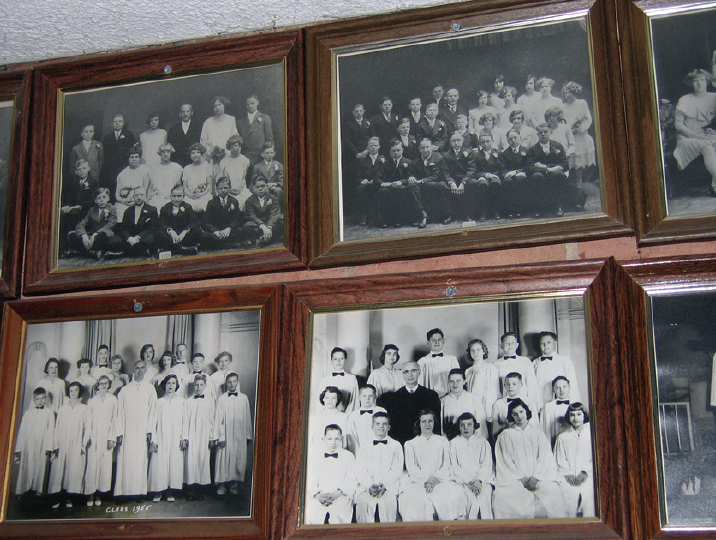
Figure 2: Photo by Toby Weiss | beltstl.com

Figure 3: photo by Laurie Maffly-Kipp
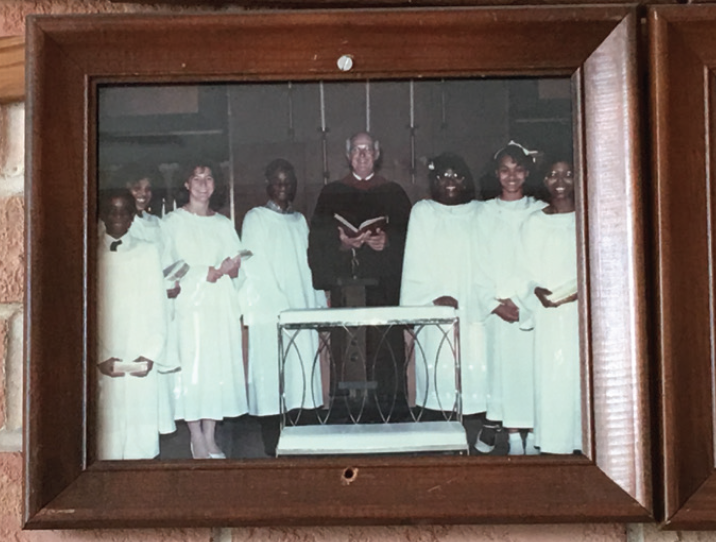
Figure 4: photo by Laurie Maffly-Kipp
This gradual racial shift coincided with other changes, both local and national, as the economic climate shifted from boom to bust. The myriad St. Louis-based industries and corporations that had fueled postwar growth, including advertising giant FleishmanHillard, Monsanto, TWA, Emerson, and Anheuser-Busch, kept the economic outlook relatively robust well into the 1980s. Then troubles multiplied—many over which local communities had little direct control. Brian Feldman has attributed the change of financial fortunes not to White flight or the gradual destruction; middle and bottom photos by Laurie Maffly-Kipp of the downtown core, but to federal policy changes that paved the way for massive organizational restructuring and industry consolidation. The 1978 Airline Deregulation Act under Jimmy Carter, followed by the Reagan Justice Department’s limited enforcement of antitrust laws that had long protected local economies from outside raids, shifted the economic centers of gravity through corporate acquisition and takeovers. The lifting of interstate banking restrictions in the early 1980s further eroded the ability of St. Louis to employ its labor force. One by one, the iconic companies associated with the region removed logos and transferred corner offices to Chicago, New York, and San Francisco.⁸
Some of the older congregants at Christ the King lived through the rise and fall of the city’s fortunes and felt their resonances in the life of the church. They remember the steady decline of membership that characterized the 1970s and 1980s, although they cite a variety of factors for that contraction. The daycare center brought in new families and attracted African Americans to what had been an ethnic White community. Demographic shifts removed more German congregants, as older members died, and their children, like so many baby boomers, fled the Protestant mainline. Still, as late as 1979 the church heralded the purchase of a magnificent new $60,000, hand-built, 18-rack pipe organ from the Wicks Organ Company in Highland, Illinois. After a full year of extensive research, church members opted for the pipe organ over a lower-cost electric model, knowing that the former would “last as the long as the building” in which it was installed. Such a choice testified both to the congregation’s relative wealth as well as to its optimism about its own future. Not everyone was happy with that decision, however, and despite the fanfare of the dedication ceremony, punctuated by a visit from the Rev. Dr. Reuben Koehler, the Missouri Conference Minister of the United Church of Christ, that celebration left deep fissures in the membership.⁹
• • •
By the time Traci Blackmon arrived at Christ the King in 2008, church membership had dwindled, and the aspirations represented by the Wicks organ were a relic of another era. As she tells it, only twelve members remained on the church rolls. The immediate issue was not a matter of race or segregation but of congregational survival. Blackmon’s background as a registered nurse in St. Louis, working a mobile healthcare van for underserved neighborhoods, prepped her for the task of revitalization, however, and she soon shifted the ministries of the congregation to the needs of the local community. Drawing on her expertise in health care, she initiated a series of programs designed to integrate discussions of health and wellness into the life of the church. Within a few years, CTK also sponsored activities that included a computer lab, tutoring, continuing education classes, summer programming, a robotics team, a children’s library, and a girls’ mentoring program.
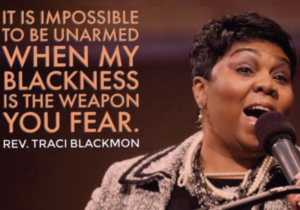
Figure 5
Rev. Blackmon’s role in CTK shifted dramatically after the killing of Michael Brown in Ferguson in August 2014. She had been a strong voice within the church up to that, and her efforts were paying off in small but steady increases in church attendance, but as the first female pastor of CTK and one of the few African-American female pastors in St. Louis, her role had been circumscribed by the legacies of patriarchy within Black churches. The uprisings in Ferguson changed everything. Moving quickly from a voice of determined moderation to a supporter of the youth leading the uprisings, Blackmon found her religious and political stride in the moment: she offered shelter and sustenance to protesters, she held vigil on the streets as citizens awaited the decision of the grand jury, and she mourned with those who lamented the failure of a system to probe further into police complicity in Brown’s killing. CTK was opened as a place of safety and solace, and on Sunday mornings Blackmon preached not of vengeance or righteousness, but of healing, of forgiveness, and of service to community needs. Her work on the Ferguson Commission augmented the extent to which she construed her ministry to extend well into the local community, serving its citizens and providing a voice for those who might otherwise remain voiceless. These events and CTK’s response have attracted a new generation of African Americans. Most of its members live or have grown up nearby, and work in local industries, healthcare, or education. Some, but not all, have joined because they met Rev. Blackmon (including one family from Canfield Green, the apartment complex that served as the site of Mike Brown’s killing, subsequent memorialization, and weeks of protest) (Figs. 5, 6).
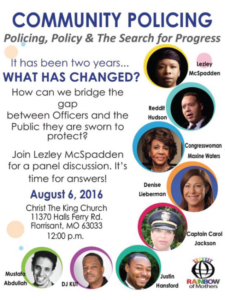
Figure 6
Yet her role within CTK was still framed by fractures of race and gender. As the first female minister in the church’s history, she often made the point that she was banned from appearing in the majority of Black churches in St. Louis. Although there are many female pastors in the UCC nationally, and she is welcomed in wider settings as a spokesperson for the community, there were many African-American male clergy who would not allow her to speak in their pulpits because they do not sanction female ordination. It is hard not to notice, too, that despite her evident talents as a preacher and national leader on issues of race and religion, it is her colleague William Barber who is most often anointed as the next Martin Luther King Jr.10
For a period of time in the 1970s and 1980s the church, if judged by its pictorial representations, was racially integrated, and even called a Black minister during its period of White predominance.
Through Rev. Blackmon’s increased visibility, Christ the King also became more closely linked to other locales, regions, and even nations. And its racial identity as a “Black church” must be embedded within its affiliation to a predominantly White denominational structure. CTK is a member of the United Church of Christ, a liberal Protestant denomination formed in 1957 through the mergers of the Congregational Christian Church with the Evangelical and Reformed Churches (two bodies previously joined through consolidations earlier in the twentieth century). The UCC takes as one of its bywords “Our Faith is 2,000 years old. Our thinking is not,” a phrase that suggests its commitment to shaping the Christian message to meet the needs of changing times, and to staying at the forefront of progressive political causes such as women’s rights and racial and social justice. Like other mainline Protestant bodies, the UCC is experiencing a rapid decline in numbers.11 As of 2016, the religious body reported a membership of 915,000 in just over 5,000 congregations. Of that group, and despite the denomination’s commitments to racial outreach and justice, some 85 percent are Euro-American; just under 5 percent are African American, and another 4 percent claim a biracial or multiracial identity.12 Churches like CTK (and its sister, Trinity UCC in Chicago) are in the minority within the national body; but they represent a potent symbol for many UCC members and leaders of racial integration.13
Many kinds of proximity and distance thus shape local community life. The disjunction between Blackmon’s increasingly prominent national role and the place of the congregation locally, for example, creates odd juxtapositions. After the Ferguson uprising, as national religious leaders flocked to the area to express support, CTK served as a political site of pilgrimage for progressive Christians and others committed to the Black Lives Matter movement. Delegates from other denominations, ministers from other UCC churches, and researchers and students all came to offer gifts, to express solidarity, or just to pay some kind of respect to the “ground zero” of the Black Lives Matter movement. With Blackmon’s intervention and hosting, Hillary Clinton held a meeting at CTK as part of a campaign swing through St. Louis in 2015, an event that involved both congregants and many others from local communities.14
In October 2015, the national organization of the UCC hired Black-mon to work half-time as their acting executive of Witness and Justice Ministries,15 a position that precipitated changes in her relationship to CTK and to ministry in St. Louis. Blackmon had been with the local church on a part-time basis before that time, as a bi-vocational nurse at Barnes-Jewish Medical Center along with her pastoral concerns.16 But the new position in Cleveland forced some transitions at CTK as well as in her own life. She retired from nursing and served half-time at CTK, commuting to Cleveland two weeks out of the month. In the spring of 2018, with national and international obligations mounting, Blackmon took a three-month sabbatical from the local church.
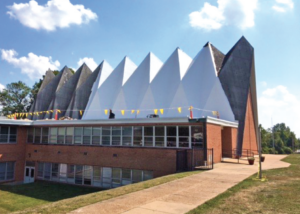
Figure 7 Photo by Laurie Maffly-Kipp
While her absence has been difficult for CTK, it had its local benefits. The congregation gained authority and cultural capital from her national and international leadership. Barack Obama appointed her to the President’s Advisory Council on Faith-Based and Neighborhood Partnerships. Since 2014, she has received over two dozen significant honors, had an audience with the Pope, and spoken at a United Nations “Hearing on Racism, Discrimination, Afrophobia and Xenophobia” in Geneva.17 Increasingly, she is also a national spokesperson for religiously-based racial justice. In 2016, after she became the Acting Executive Minister of Justice & Witness Ministries for the United Church of Christ, she participated in the “Moral Revival” national tour with Rev. Dr. William Barber of Moral Mondays and Repairer of the Breech, Rev. Dr. James Forbes of the Drum Major Institute and pastor emeritus of Riverside Church in New York, and Sister Simone Campbell of Nuns on the Bus. Blackmon’s work has pulled her away from CTK and St. Louis into national religious networks of activism.18 Other ministers at CTK have stepped up in her place. The congregation seems remarkably grateful for her national advocacy and her willingness to keep the state of Missouri in a national conversation that is growing in strength. And the church has undoubtedly benefitted from this alliance: while it still struggles monetarily, CTK has received grants and loans to mount new programs and make repairs to the building. Blackmon has reminded the congregation occasionally that not long ago they could hardly afford to cut the grass, much less replace the roof, as they were finally able to do in late 2017 (Fig. 7). That facelift has transformed the building’s appearance, and the deacons have plans to repave the parking lots and fix the outside staircase. Arguably, much of this would not have occurred without Rev. Blackmon’s leadership and national visibility.19
• • •
For all of these changes, and alongside its linkages to the UCC and the national renewal of interest in Christian progressive politics, CTK also fits comfortably within the “Black church” tradition. Most of its members have not come from the UCC, but instead have migrated from Baptist, African Methodist Episcopal, or holiness churches. Indeed, explaining what the UCC is takes up a large amount of time and space in the “New Beginnings” class attended by those joining the church. Most members employ worship practice that is more evangelical than that found in many UCC congregations, including altar calls, gospel music, and call-and-response liturgical styles characteristic of African-American traditions.20 And the congregation deals with all of the issues that are endemic in Black communities in St. Louis: lack of access to decent education and health care, as well as the real threat of racial profiling and surveillance. One sunny Sunday morning, the congregants gathered outside the sanctuary after the service with over a hundred red and black balloons. As Rev. Blackmon spoke the names of all the victims of gun violence in St. Louis over the past year, the balloons were released into the air. She then asked others to name loved ones who had been shot and killed. At least two dozen people in the gathering identified family and friends lost (Fig. 8).

Figure 8 Photo by Laurie Maffly-Kipp
Yet Sunday mornings are also a joyful time, typically beginning with praise music from the choir.21 Shamar Jordan, the music ministry director, sits at an electric keyboard in the chancel across from the pulpit, flanked by his band members who play guitar, drums, and saxophone. The choir sways and claps in the loft behind the altar, welcoming in congregants with lively music. Although the massive pipes of the organ hover directly over the choir, Jordan prefers the small keyboard; in many visits to the church beginning in 2014, I have never seen the organ used in a service (Fig. 9). Newcomers are greeted by ushers in white gloves who shake hands, hug, and pass out the order of worship. The pews fill slowly, families with small children, older couples, and often a visitor or two. One of the associate ministers, Deon McKenzie, Kimberly McKenzie, or Sonya Vann, then opens the service and prays. As in many African-American Protestant churches, praying can be extended, spirit-filled and here, backed by Jordan on the keyboard, a carefully scripted performance that looks spontaneous but which requires careful attunement to patterns of speech and action. Stylistically, the service is indebted to gospel music and even holiness traditions, with members occasionally “falling out” and shouting. An altar call, not a typical fixture in the UCC order of worship, concludes every service.
When Rev. Blackmon preaches, her words move fluidly from explanation to instruction to announcement and back again; she weaves local, national, and international events and issues into her message. Her ser-mons became much more pointed after the election of Donald Trump, and focused on shrinking the space between the church and its wider spheres of affiliation that she traverses regularly. In December 2017, shortly after the U.S. Senate’s passage of the tax bill, Blackmon explained that she was about to head off to Washington to “stand outside Mitch McConnell’s office and the Supreme Court” to protest the legislative action. “Church, something is wrong. Something is very wrong,” she continued, citing Isaiah 24:1-9, a biblical passage describing the destruction of Jerusalem after the Babylonian Exile. She asserts that the tax bill will “torture the poor” and will devastate people “who have worked hard to look middle class.” Our government is “infected with corruption and greed,” she laments. Then she calls on the members to act even when she is not leading the way. “God’s image of the church was never just about folk gathering. It was about folk scattering . . . and impacting people who might never come through these doors.”22
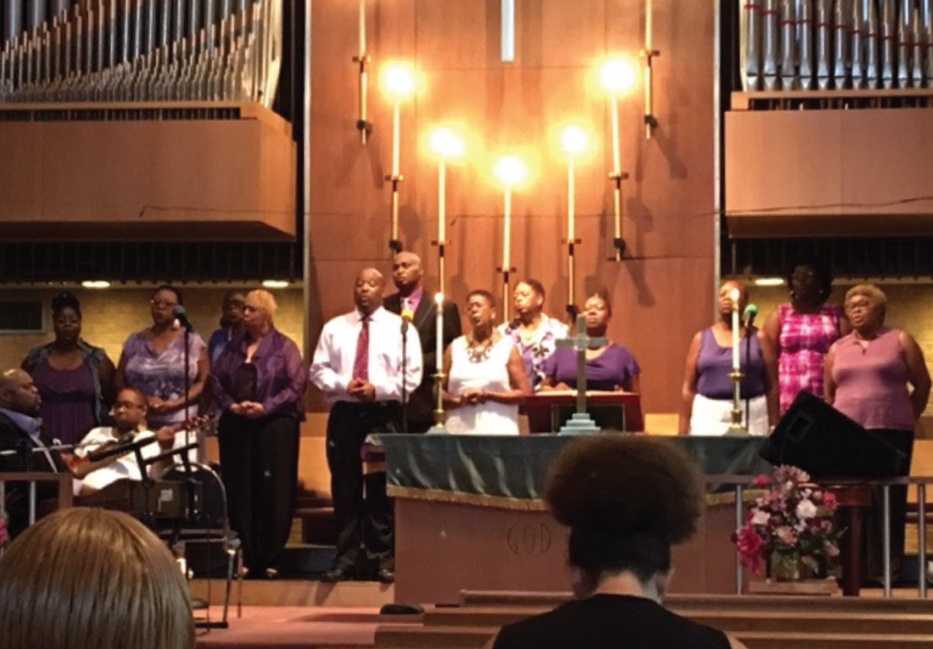
Figure 9: Photo by Laurie Maffly-Kipp
The following week she continued the theme of extending the concept of church outward in action, this time pointing the congregation toward protest that connects their actions with those of civil rights workers over the last half-century. She commented wryly that people often ask her about her life after Mike Brown’s death in 2014, as if she had never fought any battles before that time. Christians have always been fighting battles, she replies. The latest local heroes, she notes, are those protesting in St. Louis over the not-guilty verdict in the trial of Jason Stockley, a White policeman on trial for the killing of Anthony Lamar Smith in 2011. The case had caused months of disturbance throughout the county, in part because, for many, the evidence seemed to point so clearly to Stockley having planted a gun on Smith as a self-defense tactic. In the wake of the verdict, protesters shut down freeway traffic, held sit-down protests in West County malls, and unfurled a banner in Busch Stadium that read “#Expectus.” This was, Blackmon implied, the church in motion and in action, showing up in both joy and anger when necessary.23
The congregation claims all of its history: German, White, liberal Protestant, spirit-filled, and unashamedly Black.
Her messages also occasionally acknowledge the generational shifts taking place in African-American church life. For all of the social services CTK provides, for all of Rev. Blackmon’s evocations of hip-hop culture in her sermons, and for all of the deep commitments made by the congregation to supporting the Black Lives Matter movement, CTK is, like most contemporary African-American as well as mainline churches, a church of older members. The youth group is small but active, and the congregation regularly congratulates its younger members in their life transitions: graduations, awards, weddings, and births. In an April 2018 address at the Missouri Historical Society, in a series of culminating events that marked their exhibit on Civil Rights in St. Louis, Blackmon addressed forcefully the relationship between past and present. Every generation has to fight its own freedom struggle, she told her audience, and the current BLM movement was no different. They may not use the same music, and they may not be as shaped by institutional life as were previous generations. In fact, part of their protest may be directed against the exclusion of certain kinds of people from traditional religious organizations. But Blackmon calls them civil rights workers and freedom marchers and claims them as part of the Black church.24
• • •
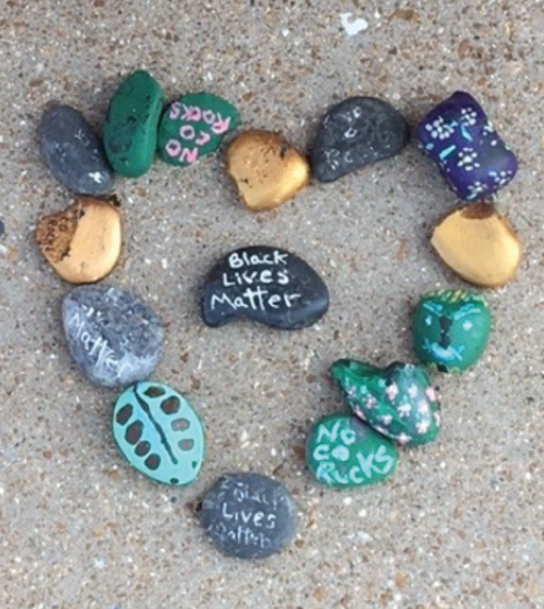
Figure 10 Photo by Laurie Maffly-Kipp
What is CTK, then, and how do we understand its history and current form as part of a living narrative of urban segregation? Current members, committed as they are to the progressive political witness and focus on a ministry to the African-American community, are not just about that. The congregation claims all of its history: German, White, liberal Protestant, spirit-filled, and unashamedly Black. During Black History Month in February 2017, one longtime member gave a talk during the service about the history of the church, beginning with the Puritans, moving through the nineteenth-century abolitionist movement and the early ordination of women in Congregational churches, and culminating in struggles over civil rights. The church is inside these modernist church walls, so hard to maintain and adapt to new uses, but nonetheless lovingly tended by current church leaders, and it is outside in the streets of North St. Louis, the malls of West County, and on the steps of our nation’s Capitol. The building is only one material site for religious life, Pastor Traci told her flock. But church is something that gets carried into new spaces. Paraphrasing the Greek poet Dinos Christianopoulos, she reminds her listeners, “They tried to bury us. They did not know we were seeds” (Fig. 10).25
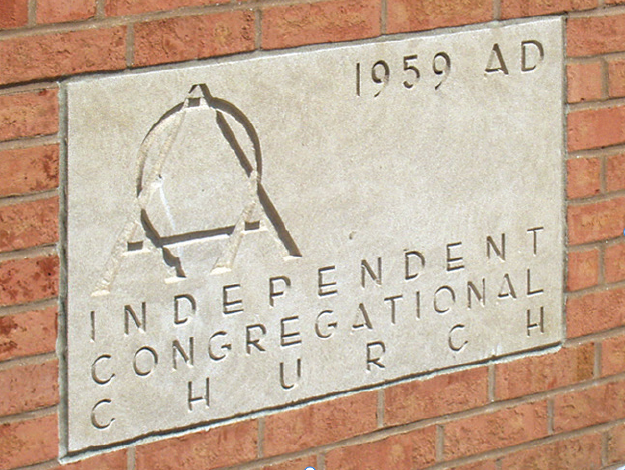
Figure 11 Photo by Toby Weiss | beltstl.com
Several years ago, Blackmon recalls, one of the descendants of Rev. Gragg, the (White) minister to the church when the new structure was dedicated, came to see her. The family wanted to reclaim the cornerstone of the building—a cement block built into the very foundation. (Fig. 11) It is impossible to know now whether that request reflected familial proprietary interests or concern about the current makeup and direction of the congregation, so different from its form in 1959. Blackmon explained to them that the cornerstone could not be removed without severely damaging the entire structure, that it was part of what held the edifice in place. It would have to stay.
